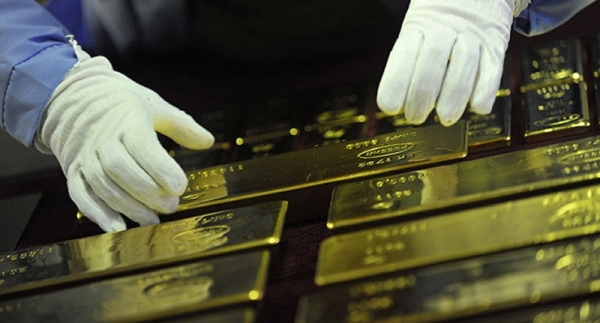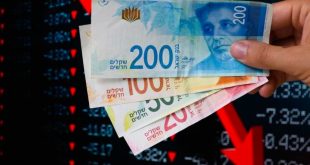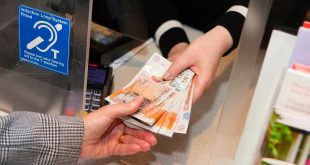
The Russian Empire from 1768 to 1869 issued counterfeit coins. Gold coins were mostly used abroad to pay for military companies scouts, saboteurs and insurgents in Europe.
One hundred years of the Russian Empire from 1768 to 1869 — issued counterfeit Venetian/Dutch ducats. Gold coins were mostly used abroad to pay for military companies scouts, saboteurs and insurgents in Europe. In all there were 28 million coins — three times more than the originals. Only after the protest of the Netherlands Russia stopped churning out the fakes, but they went around the country and Europe until the early twentieth century.
In the summer of 1769 Kronstadsky the harbour leaving a large squadron of seven ships of the line, a frigate, bombarding ships and six auxiliary vessels. It should be in the Mediterranean sea. Her goal is to disrupt the sea communications of the Turks, to promote Slavic and Greek rebels landed troops and commit sabotage; to break through to the Dardanelles. Such a war requires special expenses. Money is needed to count Alexei Orlov, who settled in Livorno and the sending of agents to organize rebellions against the Turks. Need money to rebels to purchase weapons. Greek corsairs have to pay “prize money” for captured vessels.
Together with a squadron floating fake Venetian ducats until 4 thousand coins. In 1770 they sent to Europe for 50 thousand.
Planning a breakthrough of Russia in Europe, Catherine II in 1768 concludes with the German goldsmith Johann Gass a contract to build the “secret stamps”. First choice Venetian (they were produced in Venice until 1797) and then of the Dutch ducats was due to two reasons: first, they had a popular circulation in the Mediterranean (and very wide — in the rest of Europe), and secondly, Russia, bribing saboteurs and rebels in the Balkans, did not want to reveal his supervision over them.
Archipelago expedition Russia ended in 1774, but the St. Petersburg court continued to produce counterfeit coins. A short break occurred in the Kingdom of Paul I, who was an opponent of the dirty operations in Europe. But Alexander I continued the work of his grandmother.
Top row — lead prints from the collection of the State Hermitage. The lower the ducats of the Netherlands mint in Utrecht.
The entry of Russian troops on the territory of Europe in the war against Napoleon stepped up the stamping of coins. So, in the years 1812-1814 the issue of coins of precious metals amounted to 5 million 655 thousand rubles and 1 million 355 thousand rubles were minted gold coins, that is coins as the regular issue of Russian gold coins of this period are unknown.
From the second quarter of the nineteenth century, these Golden ducats gradually beginning to play a significant role in the internal monetary circulation of Russia. The population began to call them “labanyi”, “Arapoti”, “beam”. These names owe their origin to the image on the obverse side of the coin: a warrior in armor and helmet, sword in right hand and a sheaf of arrows in his left hand. “Lobanok” — the image of a warrior who took in soldiers and Boad forehead. “Rapchik” — the image of a warrior in armour, which was considered an Arab. “Beam” — the bundle of arrows in the hand of a warrior.
Since the minting of coins of this type in the Netherlands was discontinued in 1849, in Russia, ranging from 1849 to 1867, the “secret coin” was issued “secret stamps” with one date — 1849. During this period it was released 4 million 350 thousand pieces of fake coins (with the date 1849).
In the summer of 1864 the head of the Russian mission in the Hague Baron Knorring received from the authorities of the Dutch Kingdom are very bad news: “members of the Russian Imperial family, traveling to Europe, seen in the spread of false Dutch ducats. Attached to the letter was a sample of such coins. Indeed, she was a little less genuine. After careful comparison, there were visible differences in the small details of the images and inscriptions. In August 1868, the Netherlands Ambassador in Russia, presented the Minister of foreign Affairs, Prince Alexander Gorchakov note of protest: “the government of the Netherlands known for certain about the minting of ducats at the Saint-Petersburg Mint”.
The scandal has not gone beyond diplomatic correspondence. The mystery remained until 1888, when Grand Duke George Mikhailovich of Russia in his work “Corpus of Russian coins” referred to the minting of coins in St. Petersburg. In the ninth volume of the encyclopedia Brockhaus and Efron, published in 1893, this coin was given a definition: “Dutch Ducat — the name given to the gold coins, broken into S.-Petersburg mint, with images on the sides, imitating the old Dutch ducats States.”
Only in 1945 in the transactions of the State Hermitage ” has a description stored in the Museum of stamps for the Dutch ducats, the earliest of which is dated 1768. Later, in the vaults of the Hermitage was discovered a tablet with lead seal stamps ducats: 19 front side (date from 1768 to 1849), four circulating.
Only a hundred years, Russia has minted 28 million counterfeit coins.








